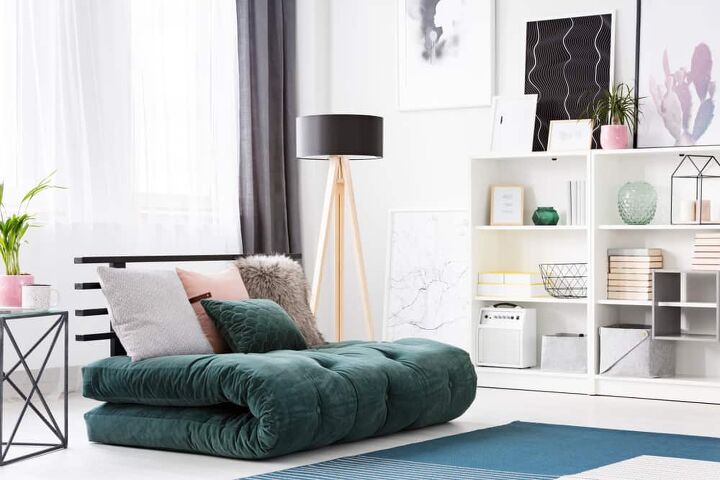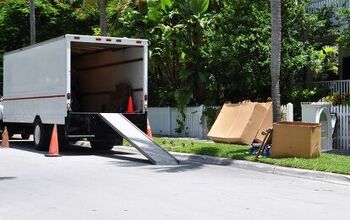5+ Cheap & DIY Mattress Alternatives (with Photos)

Mattresses are a standard part of every home. They’re the basic thing that you are expected to rest on after a hard day’s work. Heck, the mattress industry is one of the most lucrative in the sleep industry. If you think about it, mattresses are pretty pricey. You might be wondering whether you *have* to have a mattress to stay comfy at night. The truth is, you don’t…
There are several popular mattress alternatives that you can choose from, depending on your personal style and budget. The most popular include:
- Futon Mats
- Hammocks
- Day Beds/Pull-Out Beds
- Sofa Beds/Futon Sofas
- Sleeping Bags
If you don’t quite have enough money for a fancy mattress, then there are some options that you can choose from. This guide will help would-be shoppers find the perfect alternative for your needs.
Comparing The Best Mattress Alternatives
Owning a mattress that is made from high-quality wares is the best guarantee for your back health, but it’s not the only way to make sure that you get a good night’s sleep. Wondering what the alternatives are? We took a look at them for you.
1. Futon Mat
A futon mat, also known as a shikifuton, is as close to a legitimate mattress as you can get, but there are some notable differences. Mats are made to fold over, since futons themselves are meant to fold. They also happen to be slightly thicker than a typical mattress. It’s not uncommon for futon mats to be 8 to 10 inches in thickness.
Quick Facts:
- They’re cushiony and foldable. They work best with futons frames, but can be used on their own.
- Most mats will work with extra thick blankets and sheet sets. It can be rough finding good sheets for thicker mats, but this is still easier than many others.
- They can be used long-term. These are healthier for your back than others on this list.
2. Hammocks
Are you a fan of island decor? Then you might be able to spring for an outdoor hammock. Hammocks give people a way to enjoy the feeling of being suspended in the air. While the curvature and balancing effect can be hard to handle for some, it can still provide a good place to rest if you’re good on back health.
Quick Facts:
- They’re heavily curved and not advisable for people with back problems. Long-term use may actually make certain issues worse. Oddly enough, if you have lower back problems, a hammock can actually relieve them. Go figure.
- Hammocks do not use sheets. So, you can hippie out and make do with some blankets.
- Do not try to use one if you’re really heavy or bad with balance. There are hammocks for hefty people, but they don’t always hold up indoors.
3. Daybeds/Pull-Out Beds
Both daybeds and pull-out beds act as a dual-function pieces of furniture. You can either use them as a wider sofa, or you can pull out a mattress/lay on top of them. These decorative beds are slightly smaller than typical beds are, and usually are more of a “guest bed” type of deal than anything else.
Quick Facts:
- They are typically smaller than other beds. The mattress or mat that is used in these beds are like these are thinner and smaller. They can get uncomfortable with long-term use and might need additional padding.
- Sheets can be hard to find. You can sometimes make do with some twin sheet sets.
- This alternative is ideal if you’re very hard up on space, but want something traditional. They look pretty elegant in the right setting.
4. Sofa Beds/Futon Sofas
These are close relatives of daybeds and pullout mattress beds, but there’s a big difference. These are basically medium to thin-sized futon mats that are typically placed on a frame that folds into a sofa. Futon sofas are an excellent pick for people who are strapped for room, or who want a long-term option that is comfortable.
Quick Facts:
- They’re excellent for long-term use. It’s easy to cushion a futon compared to most other options.
- Sofa beds and futon sofas may struggle with sheet sets. This is only true if you have a sofabed where the “mattress” is built into the frame. Otherwise, you can use anything that would typically work with a futon mat.
- If you want to get a mattress alternative that is affordable, this is it. You might notice a little bit of wood poking into your back if you get a seriously cheap option but it’s still a possibility.
5. Sleeping Bags
Admittedly, sleeping bags are not something you or anyone should rely on for the long term. They are meant to be short-term, camping-oriented items that are used on the floors. While top-tier sleeping bags might be a good option for somewhat long-term use, the truth is that they are often uncomfortable. Try to use these only when you have no other alternative.
Quick Facts:
- These should only be used while you’re camping. Prolonged use can cause sore backs, stiffness in the joints, and other issues. You can make use of a yoga mat underneath the sleeping bag to help add extra padding.
- You do not need sheets to use a sleeping bag, but it still may be too warm for some. Sleeping bags rarely ever have the kind of ventilation that people want. This can make sleeping in them rather stuffy.
- Don’t bother trying to sleep next to another person in them. They do make two-person sleeping bags, but they very rarely actually have enough space to make it workable.
Are Mattresses Worth It?
It all depends on the mattress and your sleeping habits. A good way to explain the attitude towards mattresses is to view them as an investment. In most cases, you get what you pay for. A cheap mattress is one that might as well be replaced with an alternative. A world-class mattress (like the ones made by Tempurpedic or Sleep Number) can be worth its weight in gold for the right person.
People who have very severe back problems might want to err on the side of caution by choosing a mattress. Mattress alternatives are best used by people who have healthy backs, aren’t very particular about how they sleep, and are looking for a way to conserve space.
Can You Sleep Directly On A Boxspring?
While it’s not the most comfortable situation, the truth is that nothing is stopping you from sleeping on the boxspring without a mattress. The only problem is that you will most likely find it to be unbearably uncomfortable. Most boxsprings, particularly those that are cheap, have little to no give. The metal springs also can poke into your back, only adding to the discomfort.
Due to the lack of comfort, we strongly suggest that you don’t do this. If you *have* to make do with this, try one of the following tricks to improve your experience:
- Add a yoga mat or mattress pad to the boxspring. Any kind of cushioning is better than none, right?
- Try sleeping with a sleeping bag on top. It’s worth a shot. The sleeping bag will help prevent springs from digging into you, and also provide you with a little extra comfort.
- If you have a boxspring, try to use multiple blankets and comforters as a makeshift pad. This is a good option if and only if you don’t have an alternative.
- Consider getting a used mattress with a mattress sealer if you’re really that desperate for a mattress. It’s not the best option and it may potentially expose you to bed bugs if you aren’t careful, but it’s still something.
- Do not use this long-term, please! Boxsprings are not designed to handle all the movement that a person makes during a typical night. As a result, this is actually a pretty fast and easy way to tear a boxspring. Also, it can harm your boxspring’s warranty, if it has one. So, don’t do it.
Related Questions
How often should one replace their mattress?
This is a great question but it’s also not one of the easier ones to answer accurately. Most mattresses will need to be replaced (ideally) every six to seven years. However, some mattresses can last as long as 10, while others will need to be replaced as frequently as every three years.Before getting a mattress, it’s a good idea to learn about the care requirements of the material that it’s made out of. That’ll give you a better idea of a typical mattress lifespan. Additionally, it’s important to remember that mattresses that have been heavily soiled need to be replaced sooner than those kept immaculately.
Can you put a mattress directly on the bed slats?
While this used to be a verboten practice in the past, the truth is that it’s no longer that big a deal. Most mattresses are now designed to be capable of being put directly on the slats, and vice versa. As long as you have a relatively solid bedframe, you should be able to place your mattress on the bed without the use of a boxspring.
When is the best month to buy a new mattress?
The most recent sources suggest that May is the best month of the year for a mattress purchase. This is because most of the new mattress models get shipped out and announced in June. To clear space for the new inventory, mattress retailers have to find a way to move their old products.For buyers, this usually means that the month of May (or early June) is going to be the time of year when mattress sellers come up with tons of sales.

Ossiana Tepfenhart is an expert writer, focusing on interior design and general home tips. Writing is her life, and it's what she does best. Her interests include art and real estate investments.
More by Ossiana Tepfenhart















![10 Best Zero Turn Mowers – [2022 Reviews & Ultimate Buyer's Guide]](https://cdn-fastly.upgradedhome.com/media/2023/07/31/9070522/10-best-zero-turn-mowers-2022-reviews-ultimate-buyer-s-guide.jpg?size=350x220)



![10 Best Electric Lawn Mowers - [2022 Reviews & Top Rated Models]](https://cdn-fastly.upgradedhome.com/media/2023/07/31/9070486/10-best-electric-lawn-mowers-2022-reviews-top-rated-models.jpg?size=350x220)












